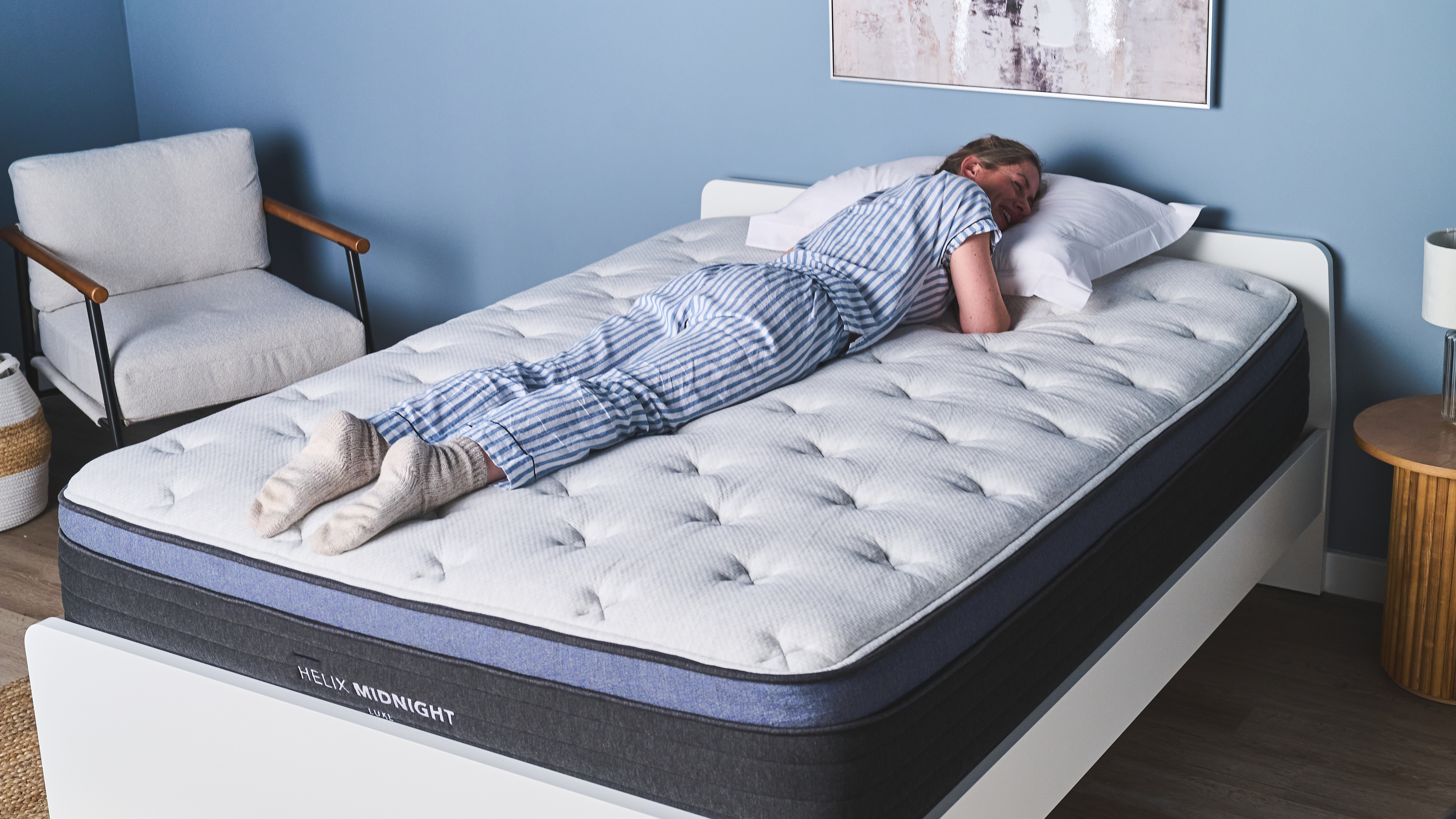Why women lose muscle during menopause and how to prevent it, according to an expert
Muscle loss doesn’t have to accompany menopause.
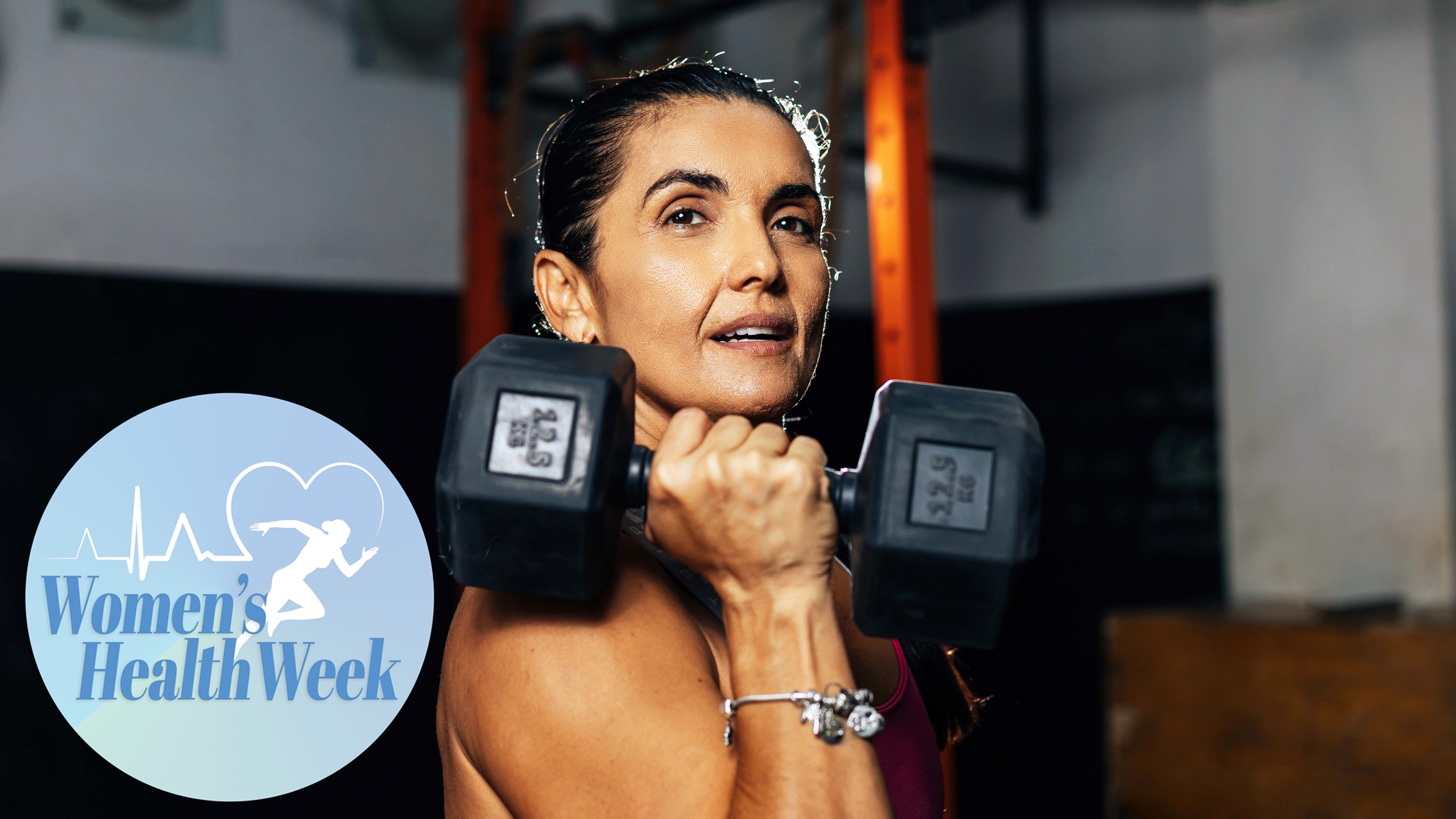
There’s a reason menopause is often referred to as “the change.” Women’s bodies go through a host of major hormonal changes during this transition, which can cause debilitating symptoms like brain fog, mood disturbances, and extreme fatigue.
This article is part of Tom's Guide's Women's Health Week — a series of content that explores how technology and the right workouts can support and empower women through every phase of life.
According to a review in the Journal of Musculoskeletal and Neuronal Interactions, menopause also comes with an increase in visceral fat mass and decreases in muscle mass, muscle strength, and bone density. Many women will start to notice these body composition changes before menopause even begins, during a period known as perimenopause.
Going through menopause is inevitable, but there are steps you can take to counteract some of its more troubling symptoms. If you’ve got a pair of the best adjustable dumbbells, you can be proactive in preventing menopause-related muscle and strength loss.
What is menopause?
Menopause is the cessation of a woman’s monthly menstrual cycle, typically diagnosed after a full year of absent menses. The onset of menopause means a woman can no longer become pregnant, and is associated with declining estrogen and progesterone levels — the hormones responsible for regulating a woman’s cycle. This usually occurs at around age 50, but can vary drastically from person to person.
Menopausal transition, also known as perimenopause, can start as early as a woman’s late 30s but normally starts in the mid to late 40s. During this time, hormone levels fluctuate and monthly cycles become irregular.
Why do women lose muscle mass during menopause?
Estrogen plays a key role in a woman’s reproductive health, but it also has another important job: building muscle and maintaining it. Estrogen levels drop drastically as perimenopause and menopause begins, and the reduction in this crucial hormone makes it harder to achieve hypertrophy (or muscle growth) and to retain current body composition.
“Women start to lose muscle in their 30s, at a rate of about 3-8% of muscle mass loss each decade,” says Kim Hommel Hernandez Miller, a certified menopause coach. “During the menopause transition, this rate increases due to a decline in estrogen.”
Get instant access to breaking news, the hottest reviews, great deals and helpful tips.

How to prevent muscle loss during menopause
Fortunately, preventing muscle loss during menopause is as simple as picking up some weights. “Research has shown that the way to fight muscle loss is by doing progressive strength training 2-3 times a week,” Hommel Hernandez Miller continues. “Strength training has been shown to help slow loss of muscle and help women maintain and even gain muscle. Strength training can also help women who have osteopenia, or loss of bone mass and density, by slowing and even helping to increase bone density.”
Women going through menopause can also combat muscle loss in the kitchen. “Adequate protein intake is vital,” Hommel Hernandez Miller added. “Recommended protein amounts are 0.54-0.9 grams per pound of body weight a day. A woman who weighs 165 pounds would shoot for 90-160 grams of protein per day, or I like to say about 20-30 grams of protein per meal.”
4 exercises that can prevent muscle loss during menopause
It’s never too late to begin a regular exercise routine, even if you’re already in menopause. These four exercises are a great place to start, and all you’ll need is a yoga mat and a moderately heavy dumbbell to do them (check out the best adjustable dumbbells for strength training at home here).
If you’re relatively new to working out, consider meeting with a certified personal trainer to ensure proper form.
1. Modified push up
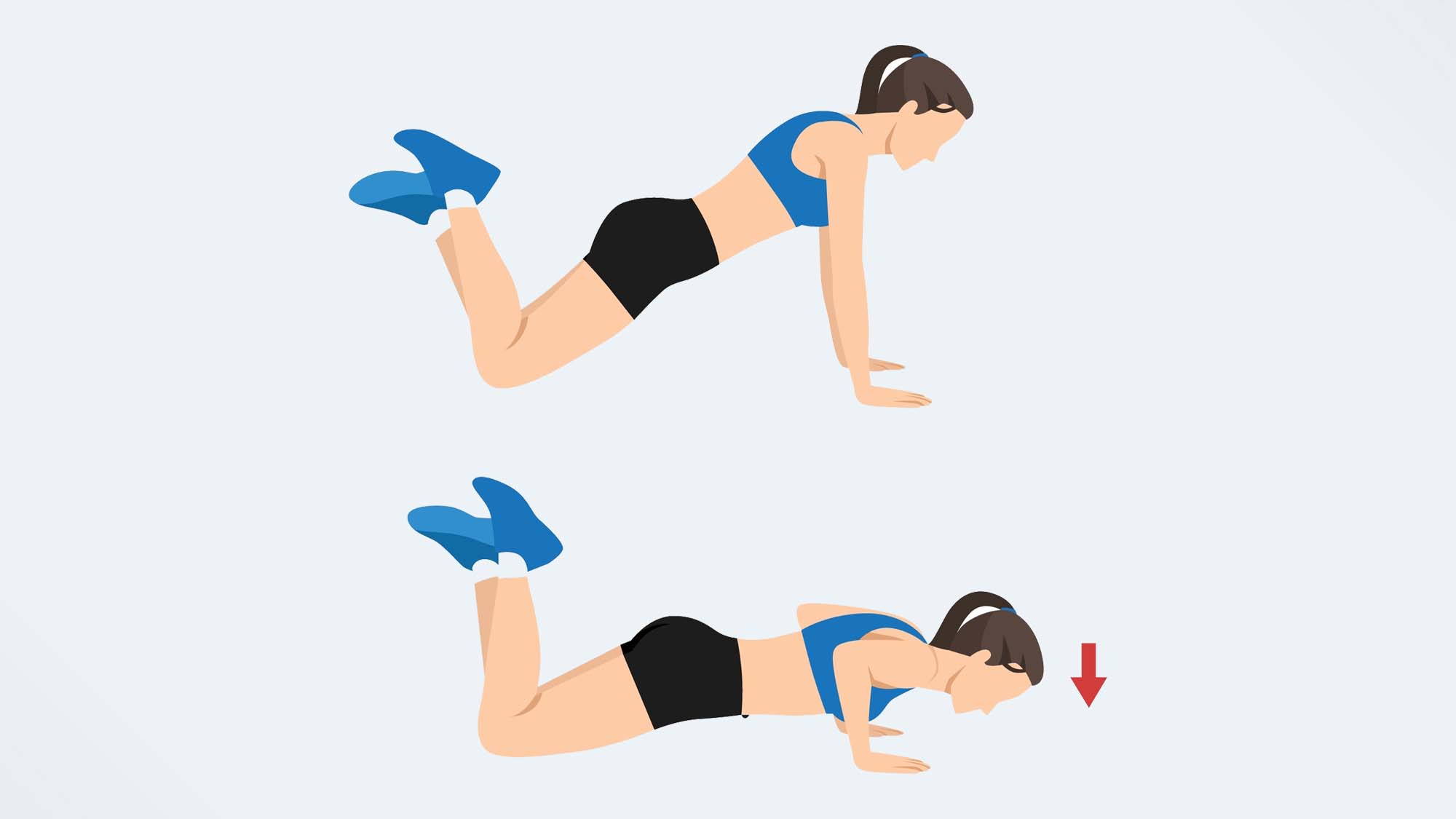
- Come to all fours on the mat.
- Step your feet back behind you, about hip width apart.
- Drop your knees to the mat and lift your feet towards the ceiling.
- Engage your core and maintain a neutral spine.
- Slowly lower your shoulders, chest, torso, and hips towards the mat.
- Once you’ve reached the end of your range, push yourself back up to the starting position.
- Continue for 10-12 repetitions, or until you reach muscle fatigue.
2. Dumbbell goblet squat
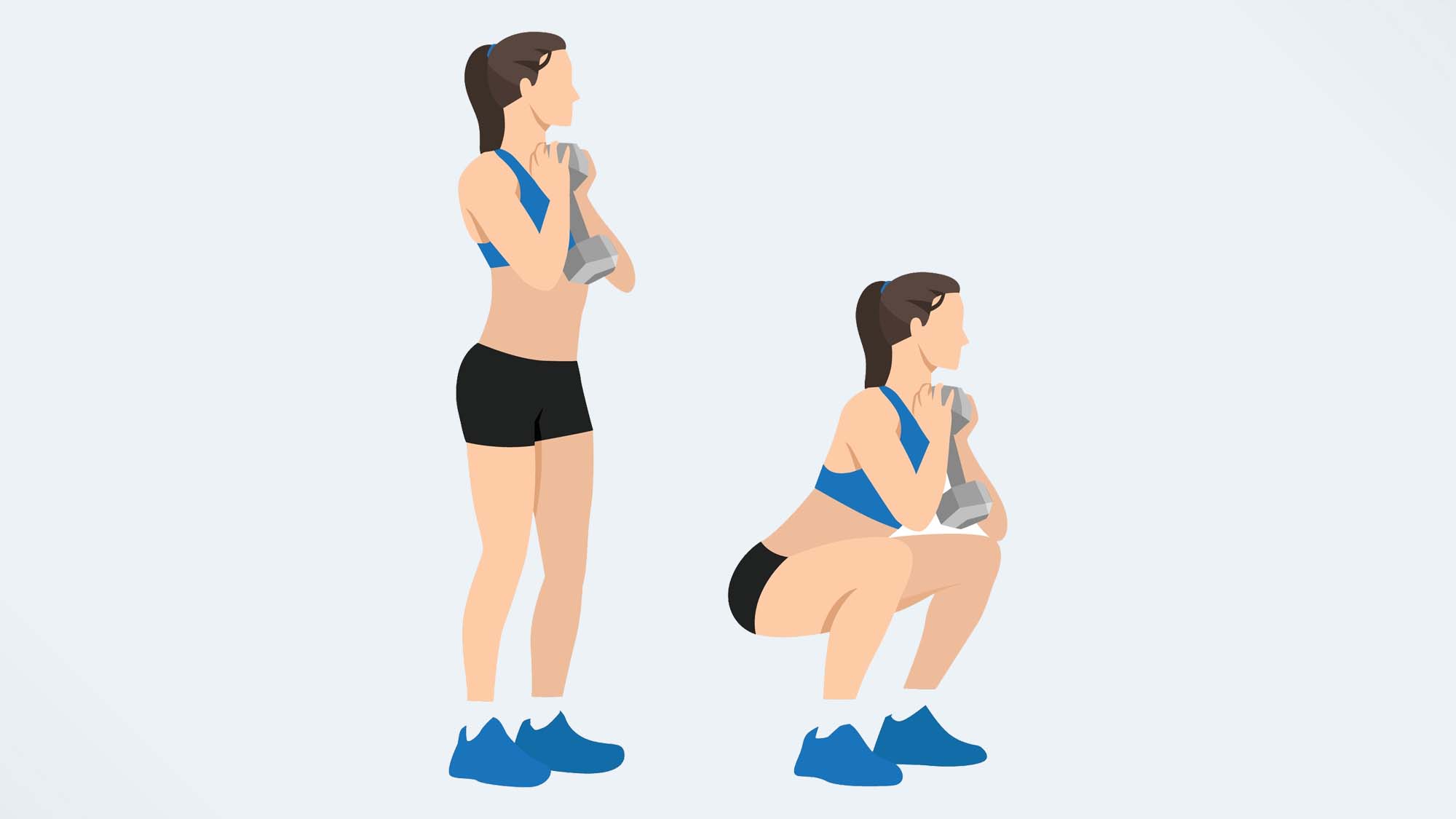
- Stand with your feet slightly wider than hip width apart.
- Hold a dumbbell at your chest.
- Engage your core and keep a neutral spine.
- Set your hips back behind you, as if you were about to sit down in a chair.
- Bend your knees and lower your tailbone towards the floor.
- Once you’ve reached the end of your range, stand back up to the starting position.
- Continue for 10-12 repetitions, or until you reach muscle fatigue.
3. Plank

- Come to all fours on the mat.
- Place both forearms on the mat.
- Step your feet back behind you, about hip width apart.
- Engage your core and keep a neutral spine.
- Hold in this position for 15-30 seconds, or until you reach muscle fatigue.
4. Dumbbell reverse lunge and curl
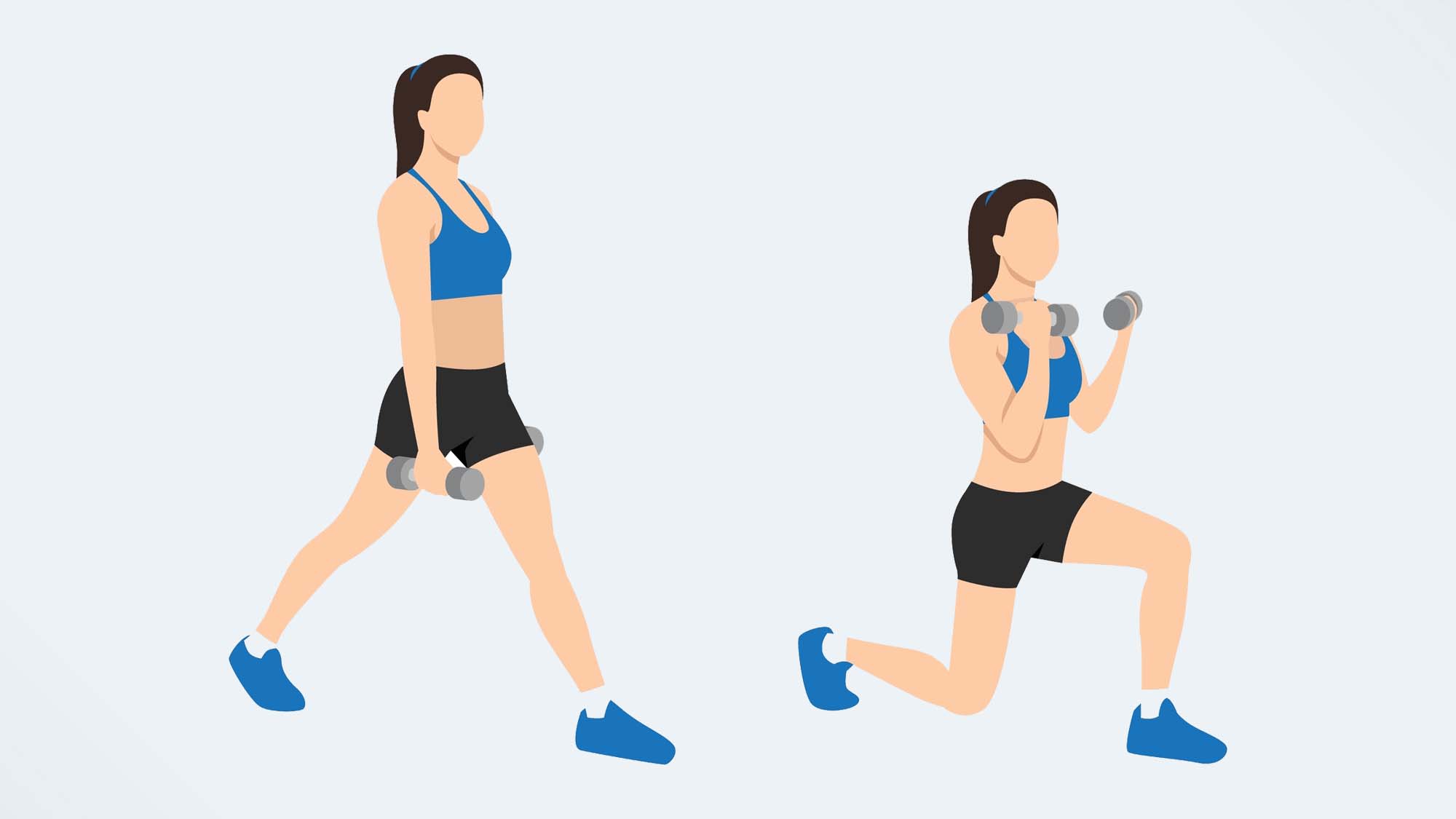
- Stand with your feet about hip width apart, holding the dumbbell in your right hand.
- Step your right foot back behind you.
- Bend both knees and lower your hips toward the mat.
- Once you’ve reached the end of your range, stand back up and step your right foot back to the starting position.
- Keeping your elbow close to your rib cage, curl the dumbbell towards your right shoulder.
- Return to the start position, and continue for 10-12 repetitions on the right side.
- Repeat with the left leg and arm.
More from Tom's Guide

Jennifer Rizzuto is a freelance writer and certified personal trainer based in Long Island, NY. She covers various fitness-related topics and reviews for Tom's Guide. She also writes sketch comedy and short films, and performs frequently as an actor, singer, and improviser. When she's not writing, working out, or performing, you'll find her trying to convince her husband to get a dog.
You must confirm your public display name before commenting
Please logout and then login again, you will then be prompted to enter your display name.
